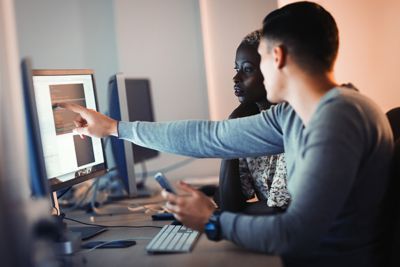-
United States -
United Kingdom -
India -
France -
Deutschland -
Italia -
日本 -
대한민국 -
中国 -
台灣
-
Ansys s'engage à préparer les étudiants d'aujourd'hui à la réussite, en leur fournissant gratuitement un logiciel de simulation.
-
Ansys s'engage à préparer les étudiants d'aujourd'hui à la réussite, en leur fournissant gratuitement un logiciel de simulation.
-
Ansys s'engage à préparer les étudiants d'aujourd'hui à la réussite, en leur fournissant gratuitement un logiciel de simulation.
-
Contactez-nous -
Carrières -
Étudiants et universitaires -
-
S'inscrire -
Déconnexion -
Espace client -
Support -
Communautés partenaires -
Contacter le service commercial
Pour les États-Unis et le Canada
+1 844.462.6797
-
ANSYS BLOG
August 14, 2020
How Computational Materials Science Can Support Remote Learning
The teaching pedagogy in higher education has been rapidly evolving in the wake of COVID-19. As the 2020-2021 school year approaches, many universities are moving to a hybrid in-person/online format or staying fully online for the fall semester. With this move to significantly more online courses, a question has been raised in the materials science and engineering education community: What about courses with large hands-on components, such as labs and or those using project-based learning?
Laboratory classes are designed to provide a visual and tangible example of theoretical and otherwise abstract topics to aid in understanding. Project-based learning courses, such as capstone or senior design, are often team-based and rely on a physical lab space and a high degree of in-person interaction to complete.
Students often gather in computer labs and libraries to work on team-based projects. But what will they do when meeting in person is not an option?
For the safety of faculty, staff and students, minimizing or eliminating in-person instruction is a valid route. So how do we keep a high level of student engagement while still providing the same amount of intellectual rigor for all our classes? Virtual computational materials science experiments could provide the visualization and support often found in physical lab classes.
The Move to Virtual Labs through Computational Materials Science
Computational materials science utilizes different simulation and modeling techniques, combined with theory, to explore and improve understanding of different materials science topics. A wide variety of techniques exist, such as:
- Density functional theory (DFT)
- Molecular dynamics (MD)
- Phase-field method
- Finite element analysis (FEA)
All these methods have different applications, depending on what material, property or product is being studied. Often, computation is used to provide insight into atomic or molecular interactions that are complex or impossible to see through traditional experimental techniques. Computational materials science is also used alongside physical experiments, helping to confirm results and identify trends.
Atomic and molecular interactions can be difficult to visualize using experimental means. Computational materials science allows us a way to “see” what is going on inside a material.
By putting the experiment back into the virtual class, simulation can allow for visualization of complex engineering concepts, such as using FEA to understand how a crack tip evolves during fracture. This can help support or replace physical labs covering the same mechanical property topics. Computational materials science also allows for advanced experiments and problem solving, similar to what students would accomplish in their project-based learning courses. By incorporating computational materials science techniques into virtual courses, students can complete experiments from the comfort of their homes.
Virtual Teaching Pedagogy: A Community Effort
Teaching pedagogy innovation and consequently teaching benefits from collaboration; pedagogical techniques are improved through the sharing of what works (and what does not) in the classroom. But, with most conferences and events cancelled through 2020, the materials science teaching community needs options to continue to share these valuable experiences.
We at Ansys look to support materials education in a variety of ways. One is through our software GRANTA EduPack, which focuses on aiding visualization of materials properties for increased student engagement. Another is through the Materials Education Symposia, which our Ansys Granta Education Division has been co-organizing for the last 12 years. In 2020, we brought this symposium to an online platform to keep the sharing of ideas during such a crucial time. We hope to bring in person events back as soon as possible, but encourage our community to still share ideas.












